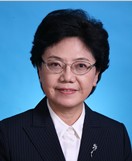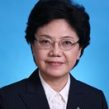
Fifth Plenum Announces End to One-Child Policy
Publication: China Brief Volume: 15 Issue: 21
By:

China has set the tone for government policy over the next five years with the announcement of the results of the Fifth Plenum of the 18th Chinese Communist Party (CCP) (State Council Information Office, October 30). Amid the various announced plans for increased transparency, a “medium-high economic growth” target and increasing foreign investment, China also announced a shift in its long standing family planning or “one-child policy” (计划生育政策). Chinese couples will now be eligible to have two children. However, a number of push factors, including the high cost of living, a difficult job market and cultural shifts, will contribute to China’s slowing population rate.
The policy, which was widely introduced in 1979, was never applied to the entire population. Though credited with the prevention of 400 million additional births, a significant proportion of the country was never subject to it. Minorities, those living in rural areas and a number of other categories were eligible to have at least two or children. In July 2014, those couples in which one of the parents who grew up as single children were themselves allowed to have more than one child; couples made up of two members without siblings were allowed to have two children (单独二孩; 双独二孩).
Nevertheless, the program affected an estimated 150 million of China’s citizens and spawned a huge bureaucracy under the National Health and Family Planning Commission (国家卫生计划生育委员会; NHFPC). According to an estimate at the end of 2005 family planning offices (计生办), employed more than 50 million officials (People’s Daily Online, March 2, 2010). The Commission is a Ministry-level organization, and its director, Li Bin (李斌) sits on the State Council and the CCP’s Central Committee. In an interview, Li said that the Fifth Plenum’s decision upheld the core concept of China’s “family planning” policy and population growth strategy (NHFPC, October 29). She added that the policies implemented during the 1970s and 1980s had eased the effects of rapid population growth, improving economic growth and people’s standard of living. She also noted that the “fewer births, better births” concept (少生优生) referring to the trend of having fewer children but investing more in their success, had become mainstream. Following the pattern of developed countries, wealthier citizens tend to have fewer children—even without family planning laws.
Over the last fifty years, China’s total fertility rate has dropped from six children per woman to 1.7—significantly below the 2.1 replacement rate. [1] This trend was already recognized by the central government, leading the Third Plenum in 2013 (十八届三中全会) to allow couples made up of single child parents to have two children (单独两孩). Li also acknowledged that China’s population aging (老龄化) was an important reason for loosening the policy.
This latter issue will come to dominate more and more of the Chinese government’s attention and budget. Reports in 2008 predicted a peak in the working-age population in 2013—part of a larger trend toward population aging (China Brief, April 8, 2011). Projections have showed a working-to-retired ratio of between 3 and 2-to-1 by 2050—creating a tremendous burden for China’s working-age population (China Brief, November 4, 2009). Moreover, as Yin Weimin, (尹蔚民) head of the Ministry of Human Resources and Social Security, noted earlier in October, China’s average retirement age is below 55—long before their equivalents in other countries (Beijing Times, October 15). This represents an enormous group of mostly unemployed people who represent an ever-larger proportion of the population. At the end of 2014, China had over 200 million citizens over the age of 60 (People’s Daily, June 12).
At the same time, the central government has pledged to improve the social services available to retirees. One of the priorities listed in the Fifth Plenum’s report was the extension of old age insurance to this group. In a separate statement at the conclusion of the Fifth Plenum, Yin Weimin noted that nearly 200 million Chinese have yet to be included in China’s social security insurance plan (Xinhua, October 29). China has taken a number of actions to deal with this ballooning group. In 2000, China set up a fund to invest social security assets, currently totaling more than 1.5 trillion RMB (Xinhua, May 29).
China’s spectacular demographic shift from the country side to the cities has also created its own crisis, with millions of the elderly left to care for their grandchildren—so-called “left behind” children (留守)—while their parents work in the cities (China Brief, September 4). The attendant vacuum this creates has left the countryside with rising violence, and indebted local governments.
With world economic growth rates predicted to remain at a steady low rate, and oil prices remaining flat, China’s economic growth will continue to slow. While the Plenum’s announced policies are ambitious—creating the economic growth and making the cuts elsewhere in the budget needed to accomplish these goals will certainly be difficult, requiring significant and meaningful reforms through the government.
Notes
1. World Bank, World Development Indicators, 2015.





